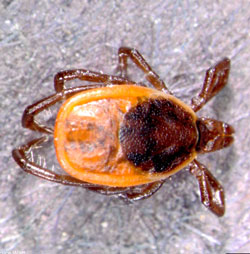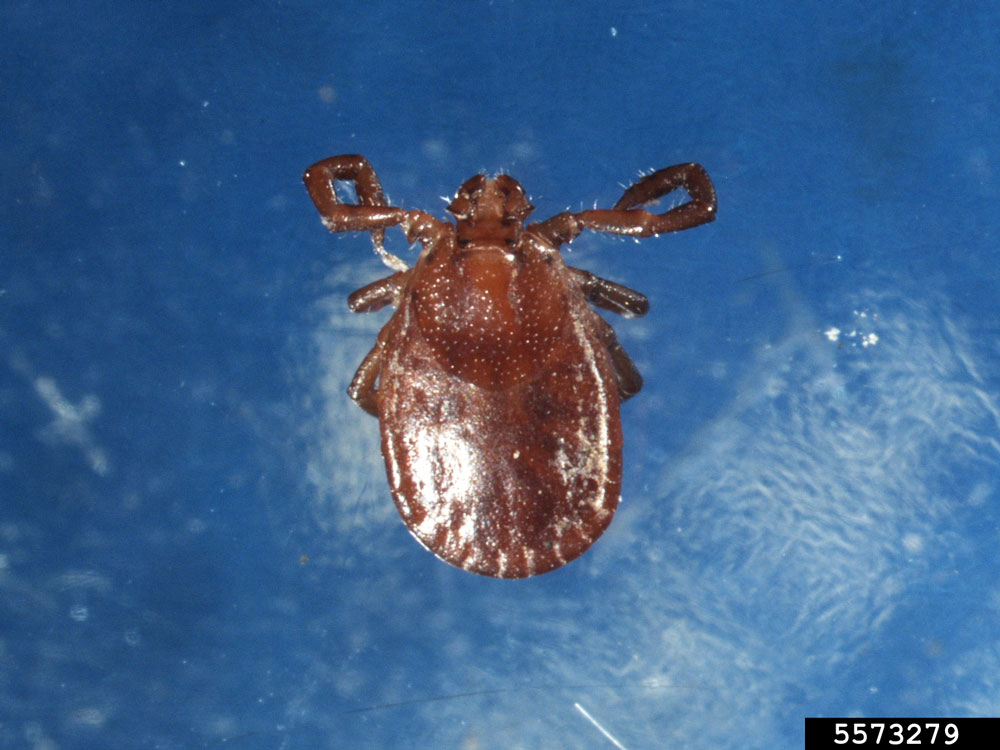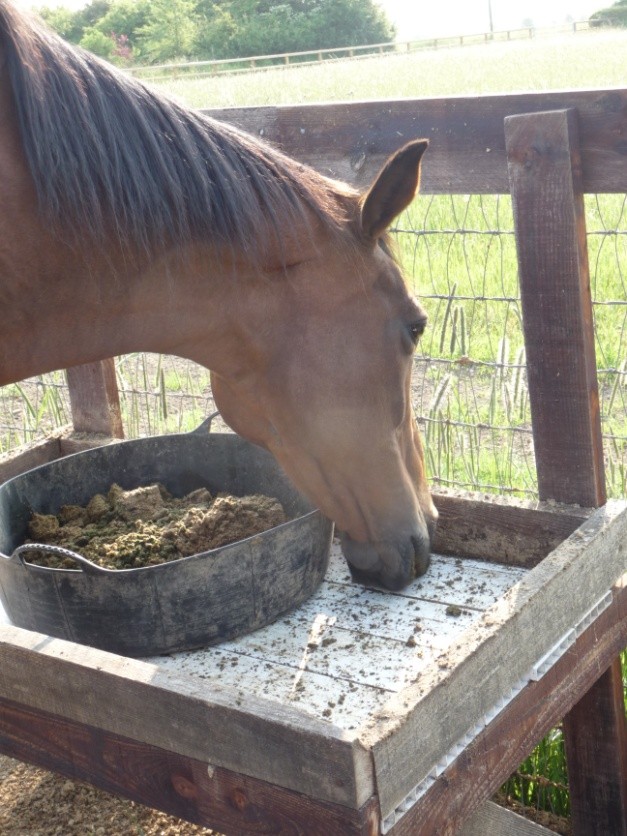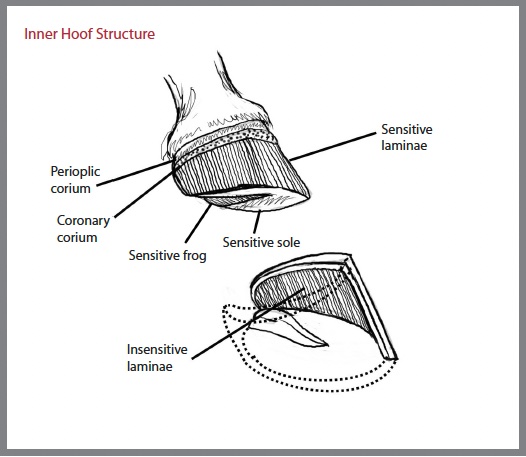Ticks are capable vectors of several equine diseases. They can cause adverse effects ranging from local irritation to acute and chronic disease.
Proactive tick management is an essential component of equine preventive care. This is particularly true as many regions continue to report increased numbers of bites and changes in species distributions.
U.S. Tick-Borne Diseases
In the United States, notable tick-borne diseases affecting horses include:

- Equine Granulocytic Anaplasmosis (Anaplasma phagocytophilum). The most commonly observed signs of infection include fever, lethargy, limb edema, and ataxia. In equines, A. phagocytophilum is most commonly transmitted by the blacklegged tick (Ixodes scapularis) in the Northeast, Midwest, and parts of the Southeast. The Western blacklegged tick (Ixodes pacificus) can transmit Anaplasmosis on the West Coast.
- Lyme Disease (Borrelia burgdorferi). Horses are less susceptible to Lyme disease than dogs or humans. Infection can result in chronic weight loss, shifting lameness, behavioral changes, and neurological signs. This disease can be difficult to diagnose in equines, as a positive blood test indicates exposure to the pathogen but not necessarily current disease status.I. scapularis also transmits Lyme disease.
- Equine Piroplasmosis (EP). Babesia caballi and Theileria equi cause EP. This disease is reportable in the mainland U.S., but endemic in Puerto Rico and the U.S. Virgin Islands. It is endemic in many regions of the world, including the Carribean and parts of South and Central America, Europe, Africa, and Asia. Transmission can occur through bites (most commonly from Dermacentor or Rhipicephalus spp.). Iiatrogenic transmission from contaminated equipment during unsanctioned racing events or through illegal importation of infected Quarter Horse racehorses is the most common cause in the U.S.
- Tularemia (Francisella tularensis). This is a rare tick-borne zoonotic disease in horses associated with Dermacentor spp. and Amblyomma spp. species. This pathogen also can be transmitted through bites from fleas and flies and through contaminated water sources. However, it is most commonly associated with bites. While rare in horses, it is of veterinary and public health significance due to its ability to persist in the environment, multiple modes of transmission, and zoonotic disease potential.
- Tick Paralysis and Hypersensitivity. Toxins in tick saliva may cause neuromuscular dysfunction or localized inflammatory responses in sensitive animals.
Emerging Species: Asian Longhorned Tick
The Asian longhorned tick (Haemaphysalis longicornis) is an invasive species that has been detected in numerous U.S. states along the East Coast and Appalachian Mountains. It has been detected on wildlife, cattle, equines, dogs, and people in Kentucky.
It reproduces asexually via parthenogenesis, enabling rapid population growth and large infestations, particularly on livestock.
This tick has been documented on horses in the U.S. No confirmed cases of equine disease have been associated with it.
Internationally, H. longicornis can transmit pathogens of veterinary and medical concern, causing diseases such as anaplasmosis, babesiosis, ehrlichiosis, theileriosis, and rickettsiosis.
Its ability to cause anemia and death in cattle raises concern for similar effects in heavily infested horses, particularly if infestations go unnoticed. However, no such cases have been reported.
Horses can develop hypersensitivity reactions to tick and other arthropod bites. Even mild infestations of H. longicornis could exacerbate stress, pruritus, and allergic dermatitis. This could affect the welfare and performance even in the absence of pathogen transmission.
Most Common Equine-Associated Species in the U.S.
The most common U. S. tick species associated with horses are listed below.
- Amblyomma americanum (lone star tick)
- Amblyomma maculatum (Gulf Coast tick)
- Amblyomma mixtum (Cayenne tick)
- Dermacentor albipictus (winter tick)
- Dermacentor andersoni (Rocky Mountain wood tick)
- Dermacentor variabilis (American dog tick)
- Haemaphysalis longicornis (Asian longhorned tick)
- Ixodes scapularis (blacklegged tick)
Integrated Prevention and Property Management
Most tick species tend to prefer habitats with shade, moisture, and vegetation. This includes wooded edges, brush, and tall grasses commonly found on or adjacent to horse properties or along trail riding locations.
There are environmental, behavioral, and chemical strategies to reduce the number of ticks on the property and reduce equine exposure.
This can include pasture and property management to reduce areas that are more likely to harbor ticks. It also includes reducing wildlife from bringing them onto the property.
Integrated management also includes on-animal prevention strategies. The aim is to reduce ticks from attaching to animals and remove them quickly when they do attach.
Pasture and Property Management
Reduce tick habitats on your horse property through these management techniques.
- Mow pastures frequently to reduce habitats likely to harbor ticks.
- Create buffer zones between wooded or brushy areas and paddocks. Remove brush, leaf litter, and overgrown field margins.
- Exclude wildlife (e.g., deer, raccoons) via fencing or deterrents to reduce tick introduction and movement of disease-causing pathogens.
- Control rodents through exclusion and secure feed storage. Rodents serve as reservoirs for immature ticks and several tick-borne pathogens.
On-Horse Prevention
Perform daily checks on your horses. Focus on thin-skinned, less-visible areas such as ears, eyelids, muzzle, chest, belly, mane, and tail. Do full body checks after equines have been in areas where ticks may be more common. This includes after trail rides in brushy habitat.
Apply EPA-registered pyrethroid-based sprays labeled for equine use. Reapply insecticides as needed based on rainfall or sweat. These products are typically only effective over a short term.
Fly sheets or insect barriers might provide partial protection from biting flies and ticks.
Avoid off-label or overuse of pesticide products on horses to prevent skin irritation or systemic absorption. Consult with a veterinarian before application of on-animal chemical products.
When to Heighten Vigilance
Make sure to examine horses for ticks after trail rides or turnout in brushy or wooded areas.
Peak activity months include spring through fall. Keep in mind that milder winters might support year-round activity in parts of the Southeast and South Central U.S.
Veterinary Role in Surveillance and Education
Veterinarians can contribute to equine welfare through owner and caretaker education on tick-borne diseases. They also can offer advice on preventative approaches for arthropod-borne diseases and associated conditions.
Submit ticks for identification through state Departments of Agriculture, Environmental Health, or Public Health Departments, or through state Extension services.
In Kentucky, suspected Asian longhorned ticks (see below) can be submitted through the University of Kentucky Cooperative Extension Service by bringing them to your county Extension office.
For identification of suspected Asian longhorned tick in Kentucky, please preserve specimens in ethanol or hand sanitizer (without additives such as aloe) or in a resealable plastic bag after freezing specimens (to kill ticks). Mail specimens to University of Kentucky Veterinary Entomologist Dr. Hannah Tiffin at the address below along with information on date of collection, host animal collected from, county of collection, and follow-up contact information.
Mail preserved ticks from Kentucky to Hannah Tiffin, PhD, Assistant Professor, Department of Entomology, University of Kentucky, S-225 Ag Science North, Lexington, KY 40546-0091.
The University of Kentucky’s Equine Disease Quarterly provided this article. Hannah Tiffin, PhD, authored the article. She is an assistant professor in the Department of Entomology at the University of Kentucky. Contact her at hannah.tiffin@uky.edu.
Further Reading
- Equine Insect Repellents for Horses. Dr. Nancy S. Loving. MySeniorHorse.com
- 6 Tips to Decoding a Fly Spray Label. MySeniorHorse.com
- 8 Health Issues for Horses in Summer. MySeniorHorse.com
- Insect Management on a Horse Property. Dr. Nancy S. Loving. MySeniorHorse.com












